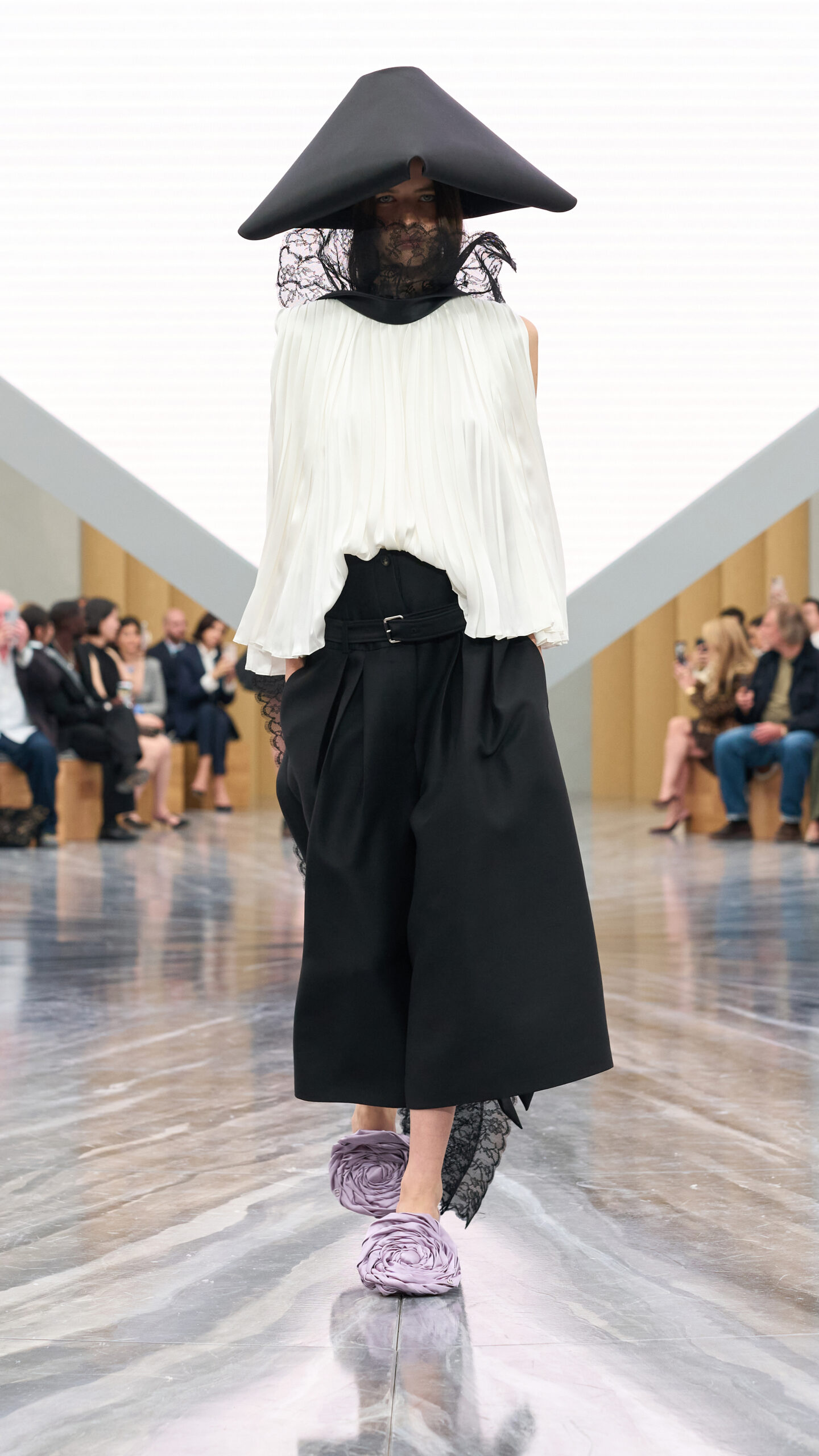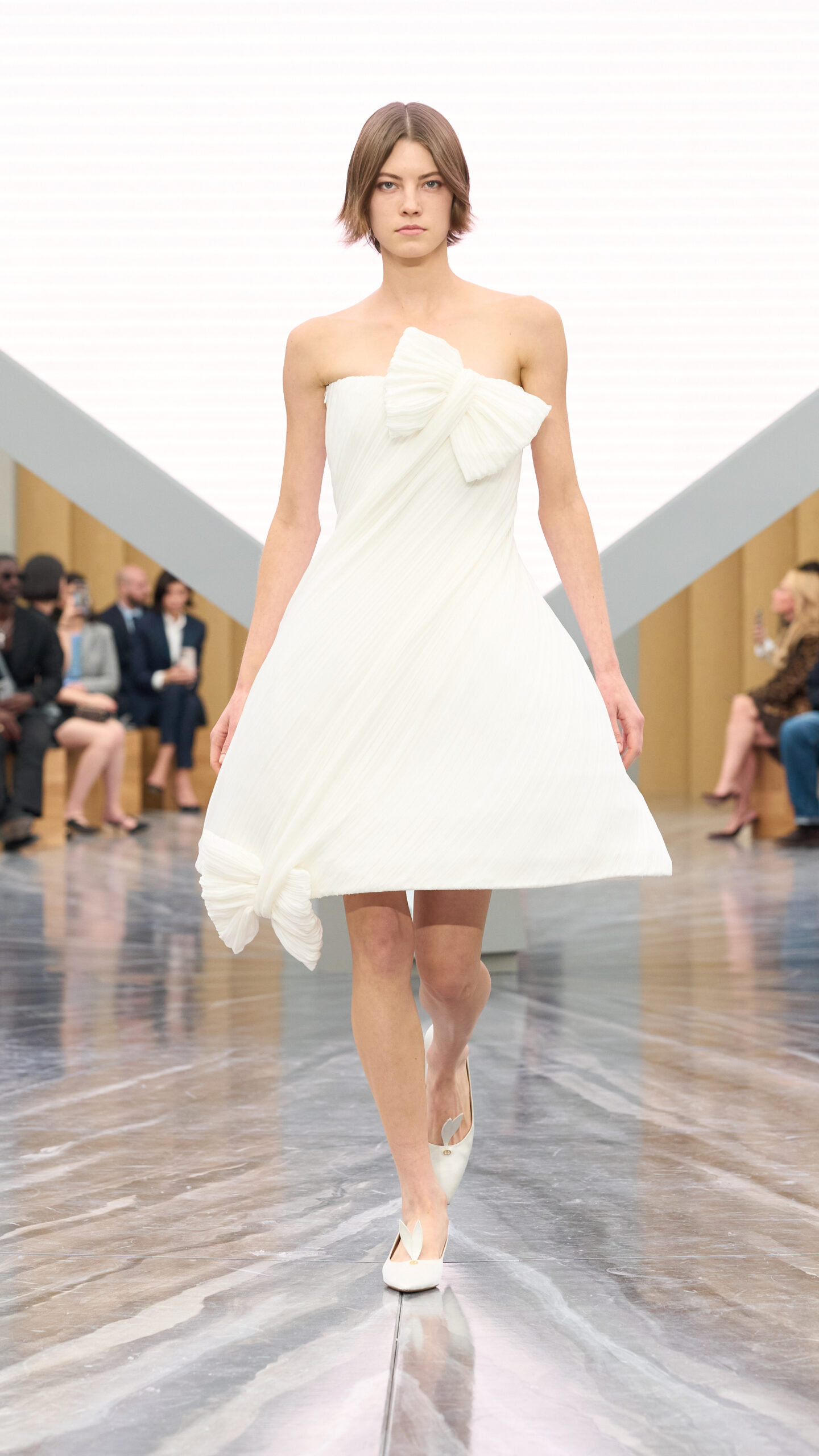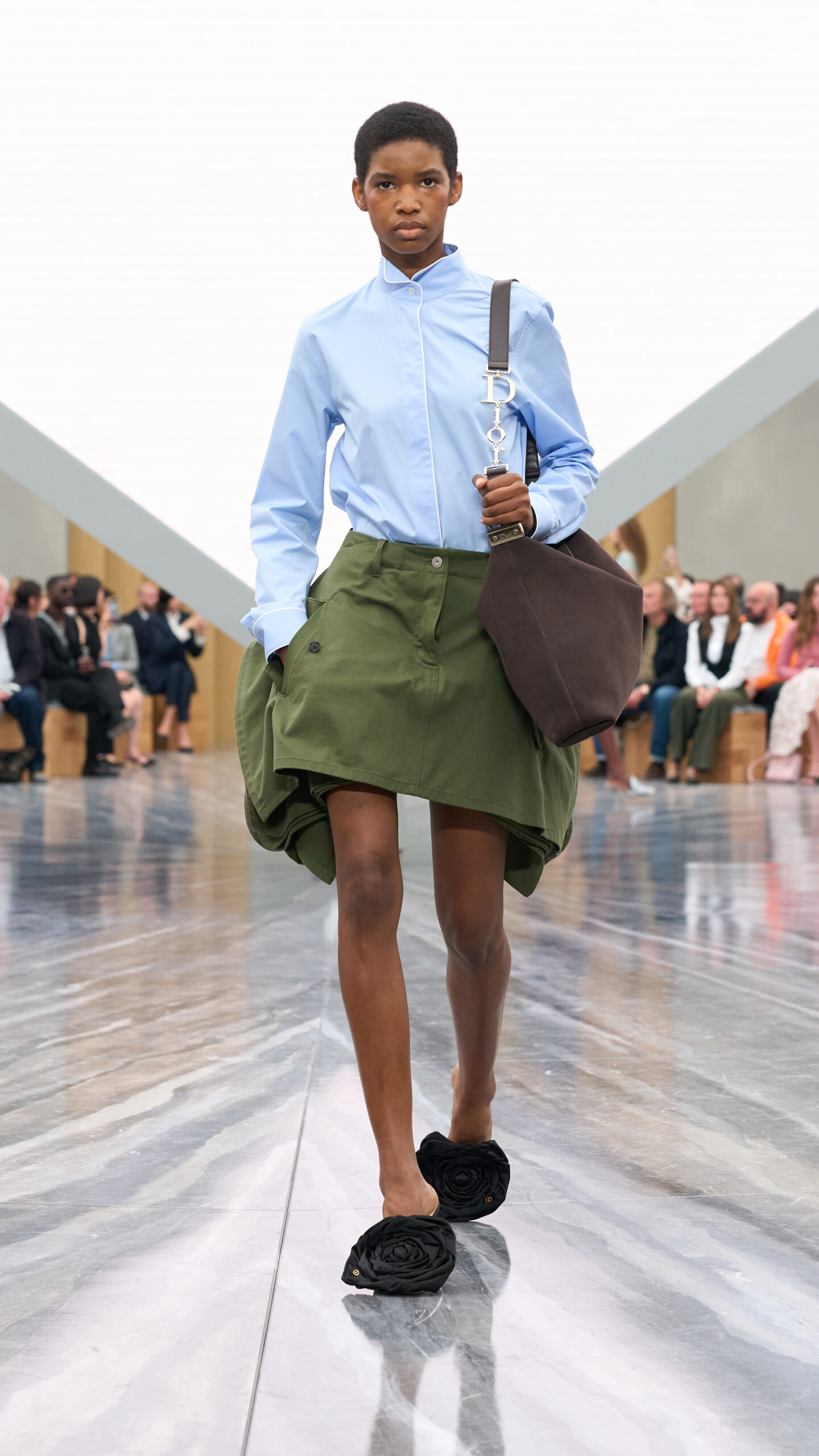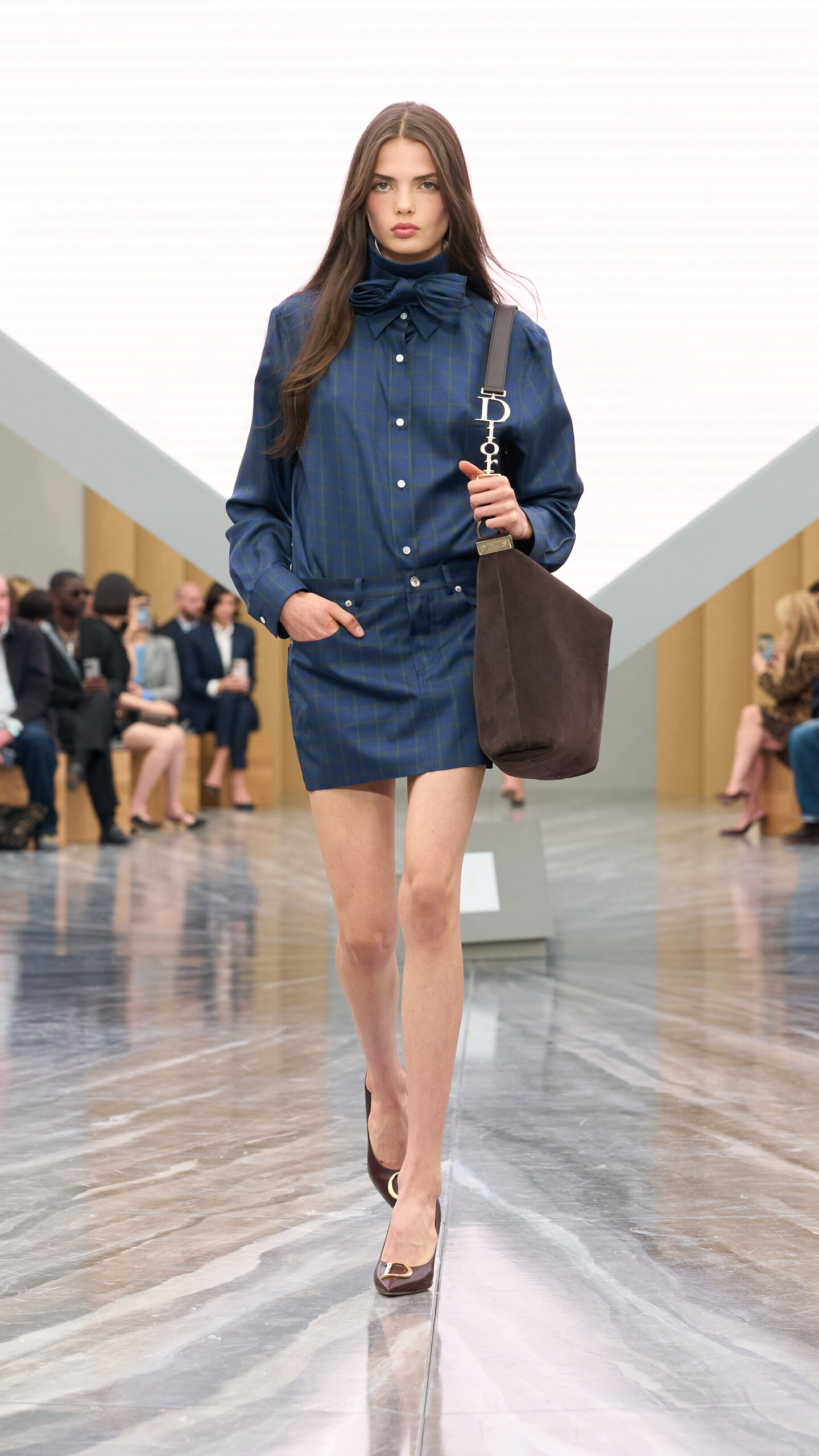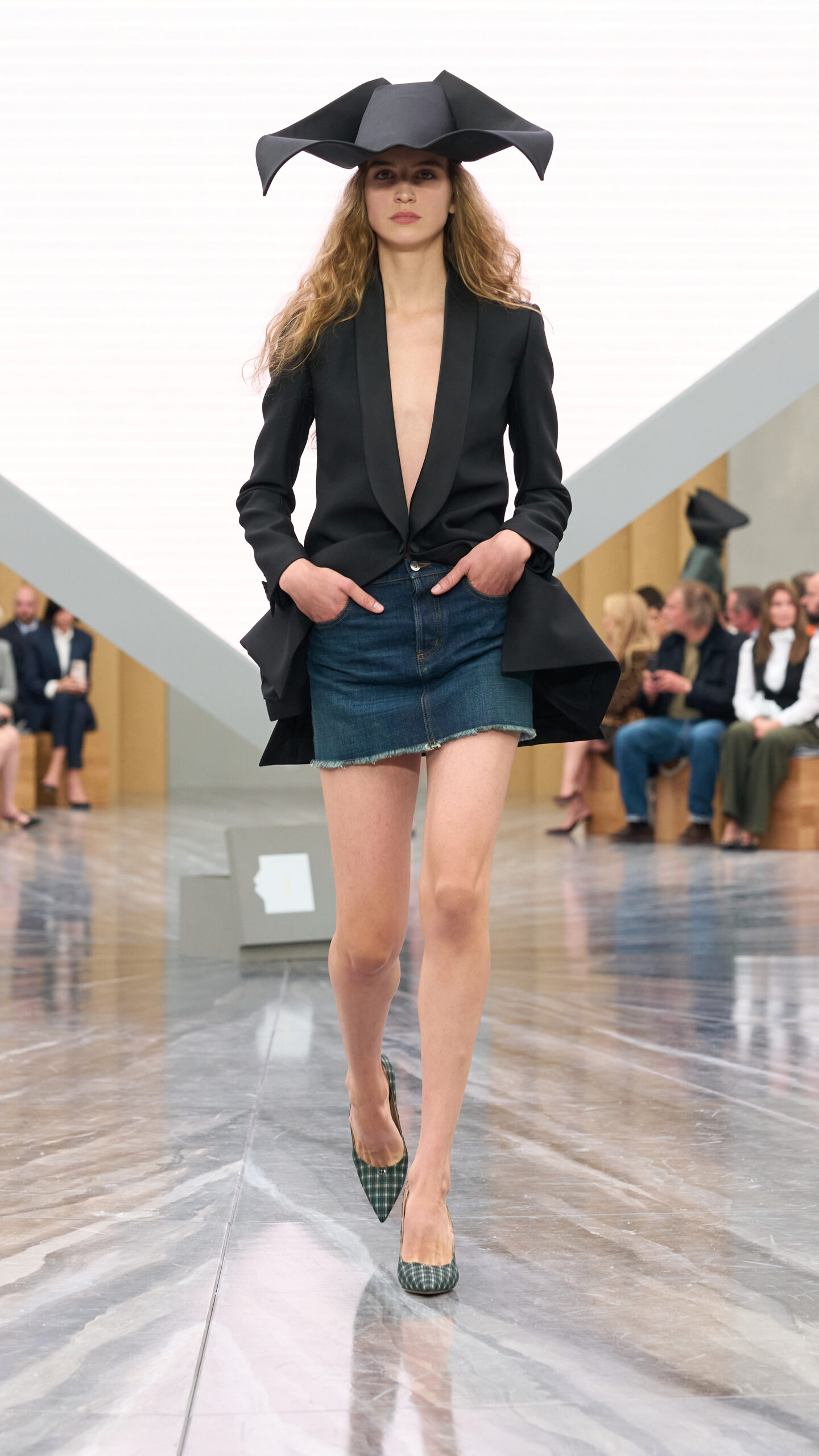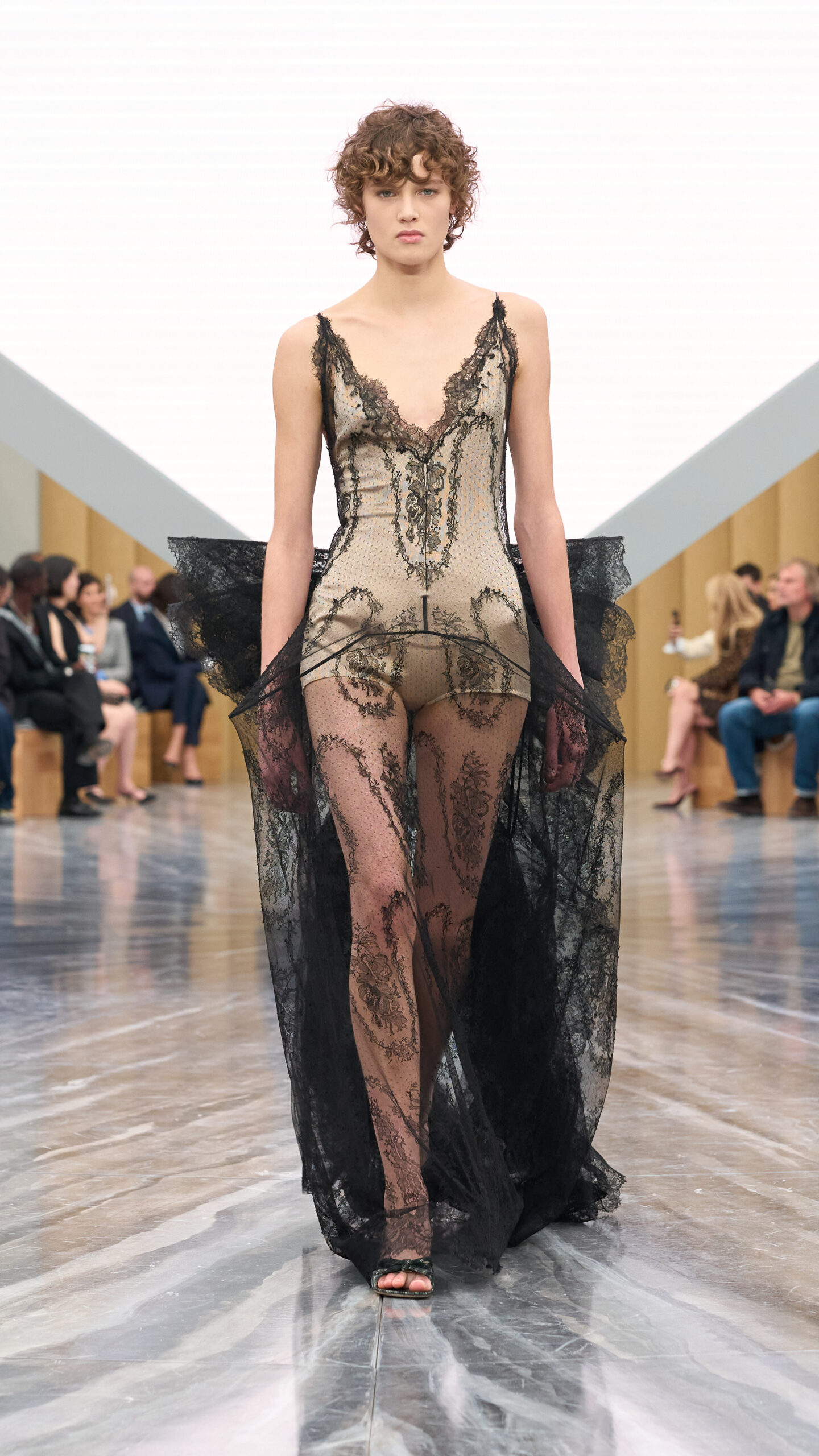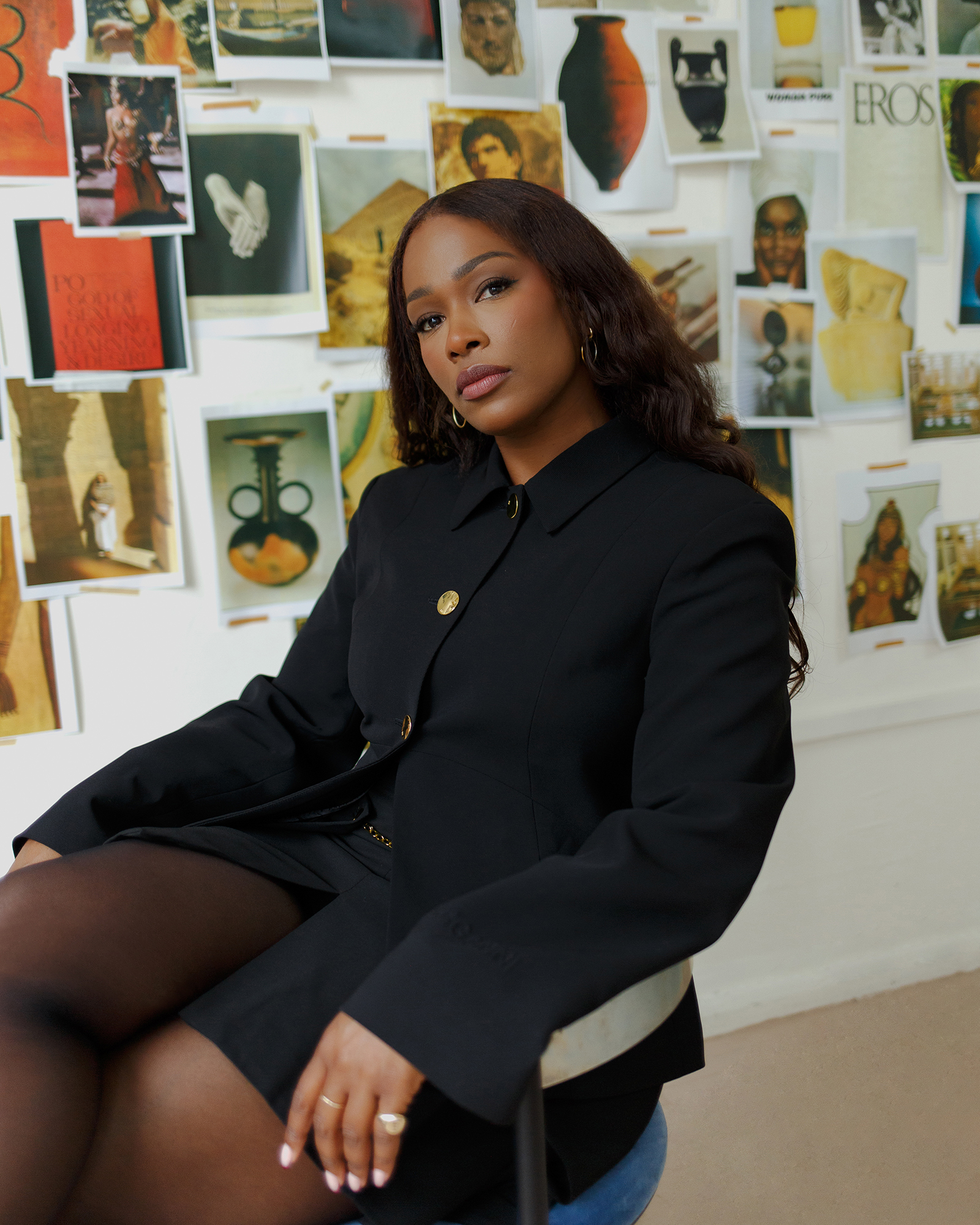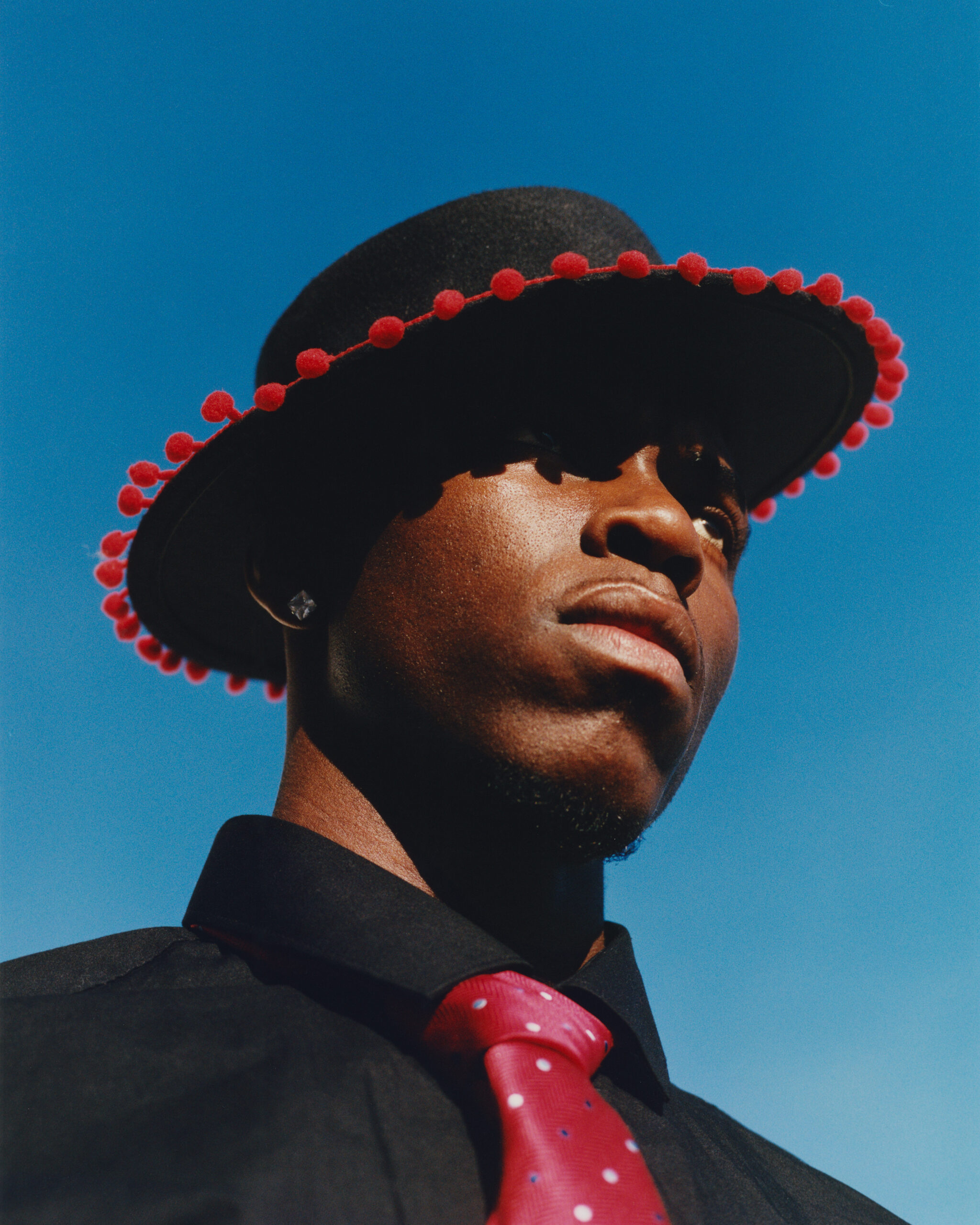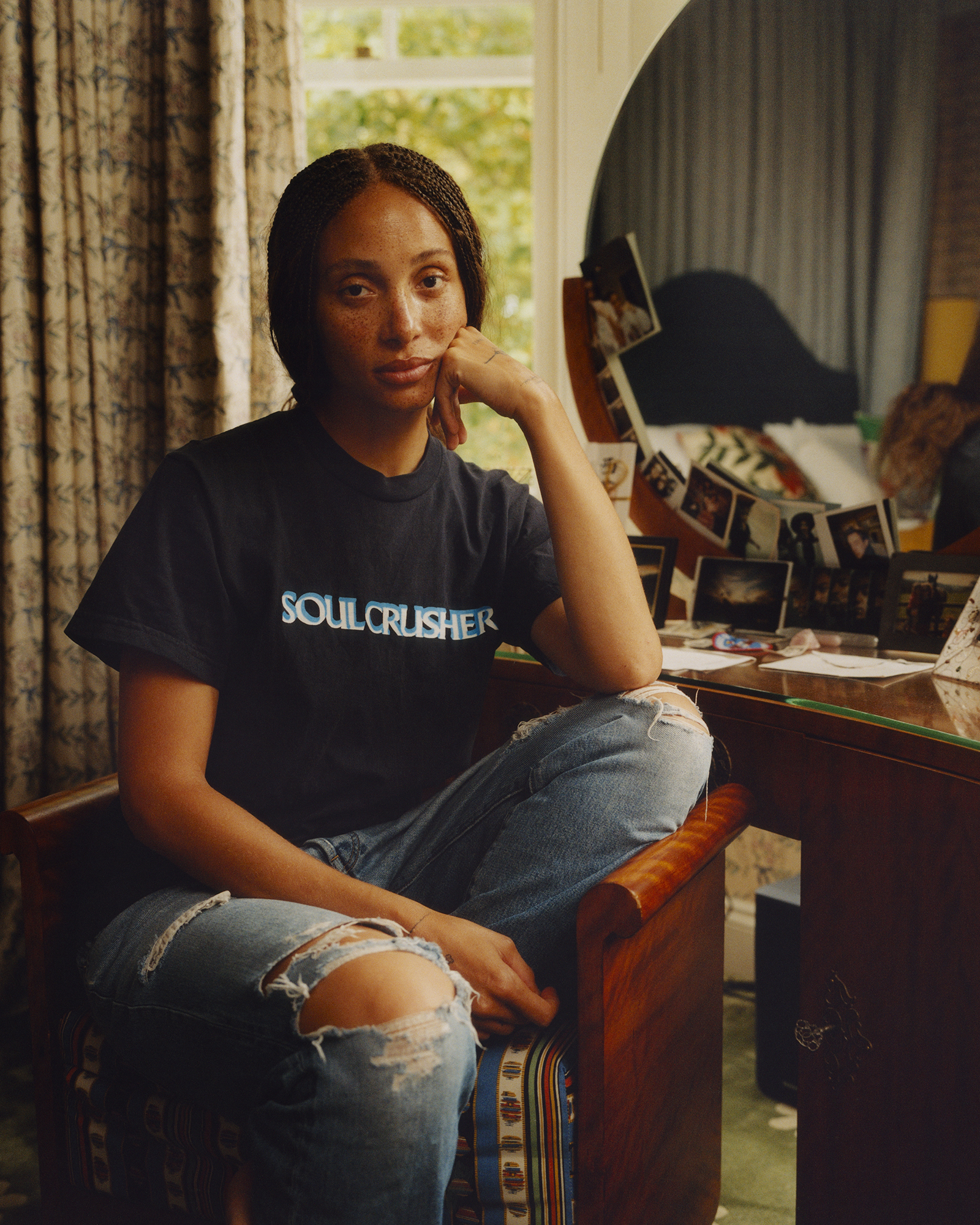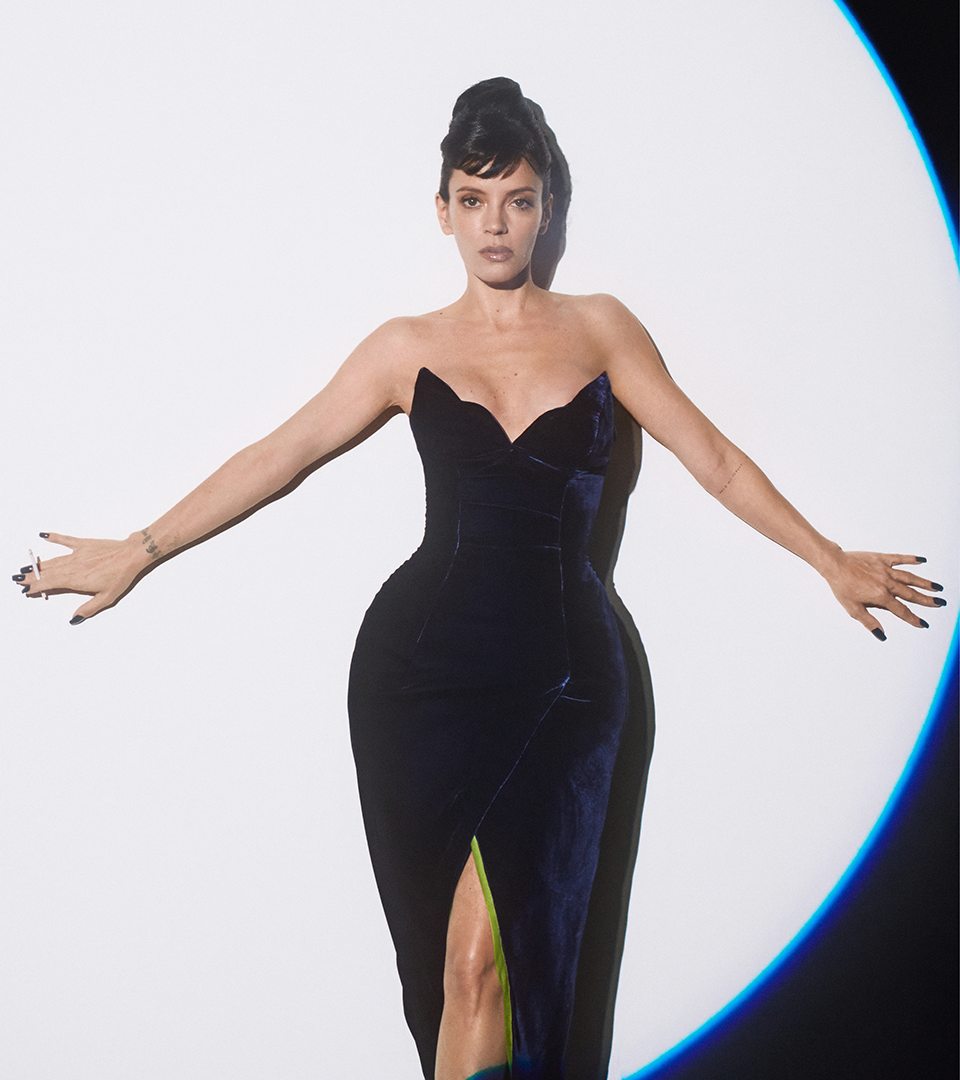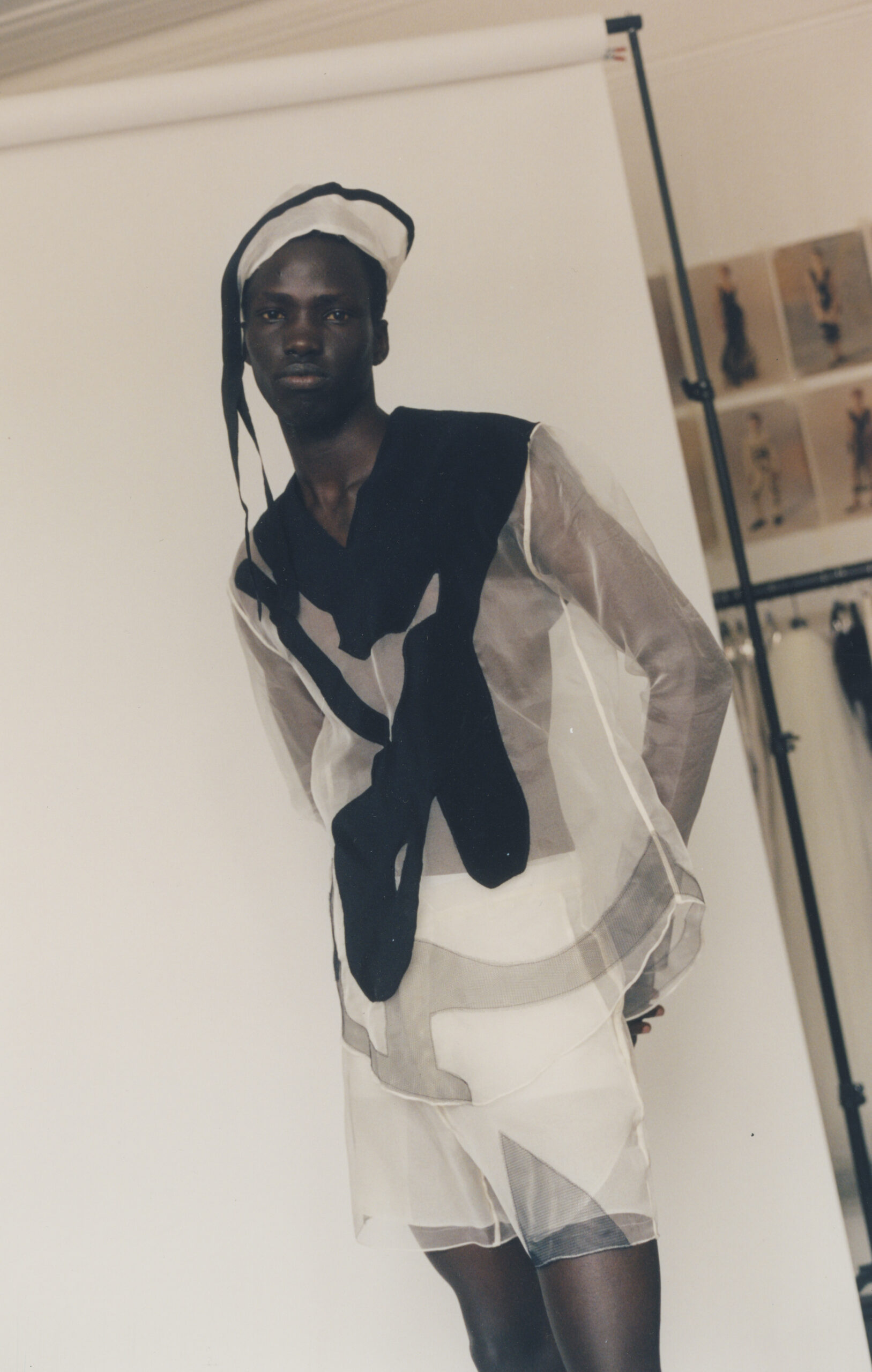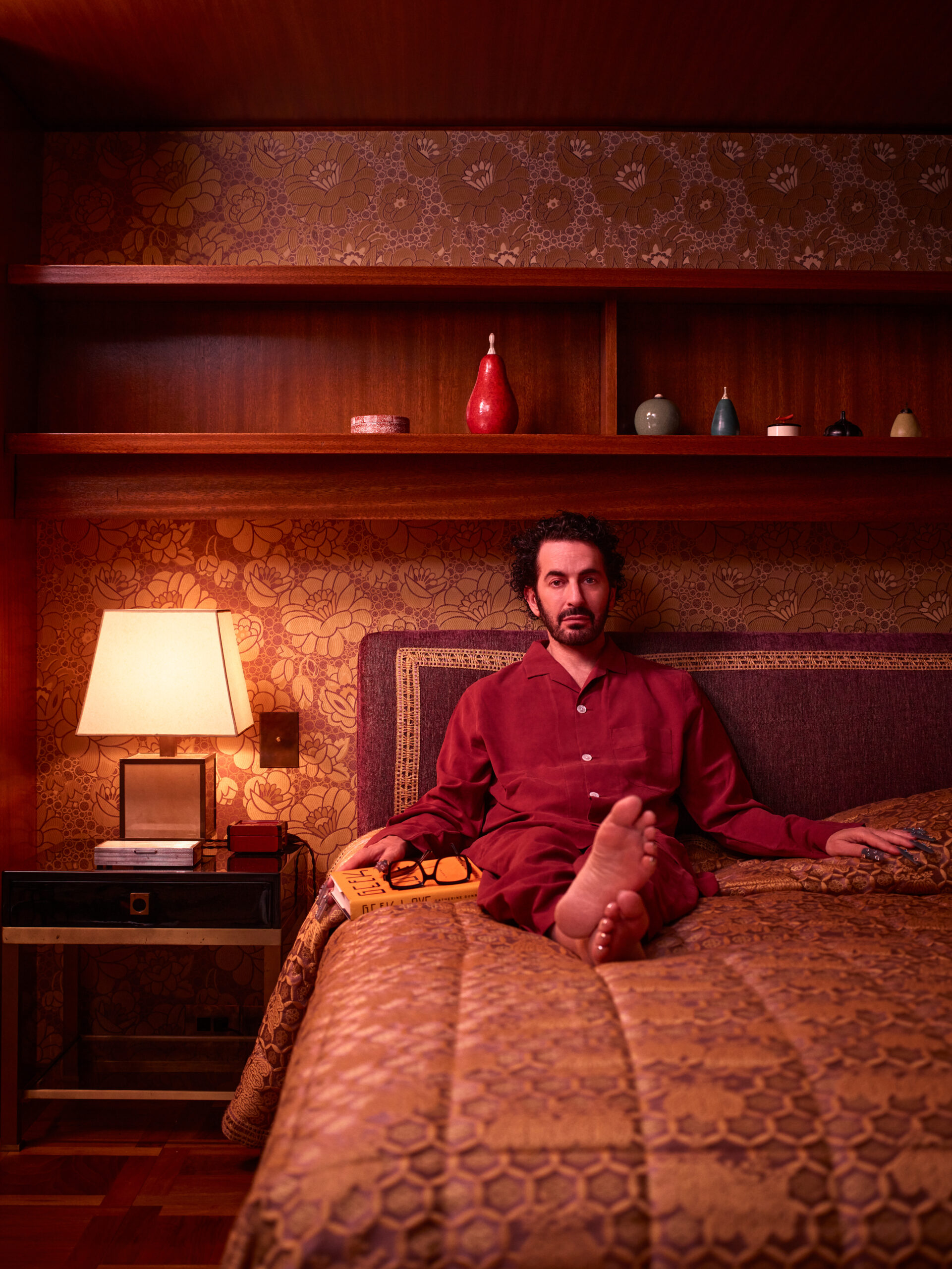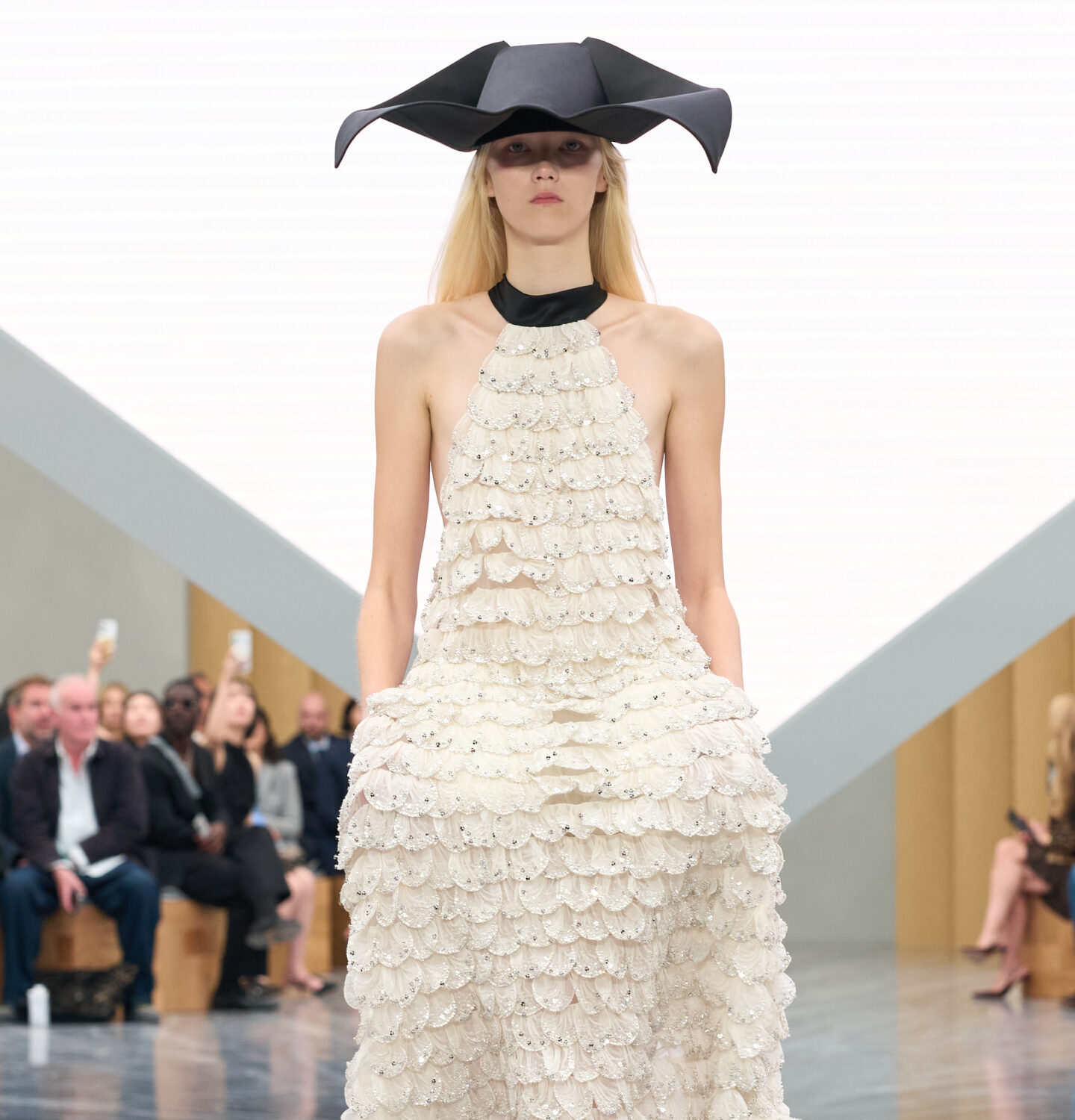
Jonathan Anderson’s
Dior Debut
Anders Christian Madsen reviews Jonathan Anderson’s debut women’s collection for Dior, for Spring/Summer 2026.
“This season, for any designer working, it’s a lot of pressure. It’s imagination pressure. It’s sheer boredom of not being able to control politics, so we throw it onto something else,” Jonathan Anderson said during a preview of his first Dior women’s collection on Wednesday morning. Some in the industry have turned this reboot season — where 14 designers are entering new houses — into a gladiatorial match. Who will be more creative? Who will do a better job at balancing heritage and innovation? Who will win and who will lose? As an overture to the show —staged in a tent in the Tuileries — Anderson had commissioned the filmmaker Adam Curtis to create a short film that captured his feelings.
Opening with the written words “Do you dare enter the house of Dior?” the film — screened on an upside-down pyramid hung from the ceiling — mixed clips from black-and-white suspense movies with archival footage from the eras of Dior. With music that pulled at the heartstrings and imagery of all its creative directors, it was one of the most emotional moments we’ve seen in a fashion show in a long time. When it flashed to the magical moment John Galliano took his bow dressed as an astronaut in July 2006, it was hard to hold back the tears. And the show hadn’t even started yet. For better or worse, when it did — to Fred Again and Brian Eno’s C’mon — the imagination pressure was on. You could feel it in a collection that intentionally traversed a plethora of dress senses.
“We don’t live in a clone zone. I want different women to engage with this brand. You can go here, here or here,” Anderson said earlier in the day, gesturing at the different energies represented by the looks in his lineup. There were pretty princess floral dresses (some, albeit, with fairly avant-garde triangular crinolines), arts-and-crafty braided skirts, shrunken Bar suits, and normcore chino-and-polo compositions. Suddenly, a face-covering veil popped up — inspired by a dress Yves Saint Laurent created for Dior — adding a rather radical atmosphere to the proceedings. Hats by Stephen Jones made to look like “American high-speed aircraft, or stingrays, or inside-out Bar hats” felt kind of Napoleonic.
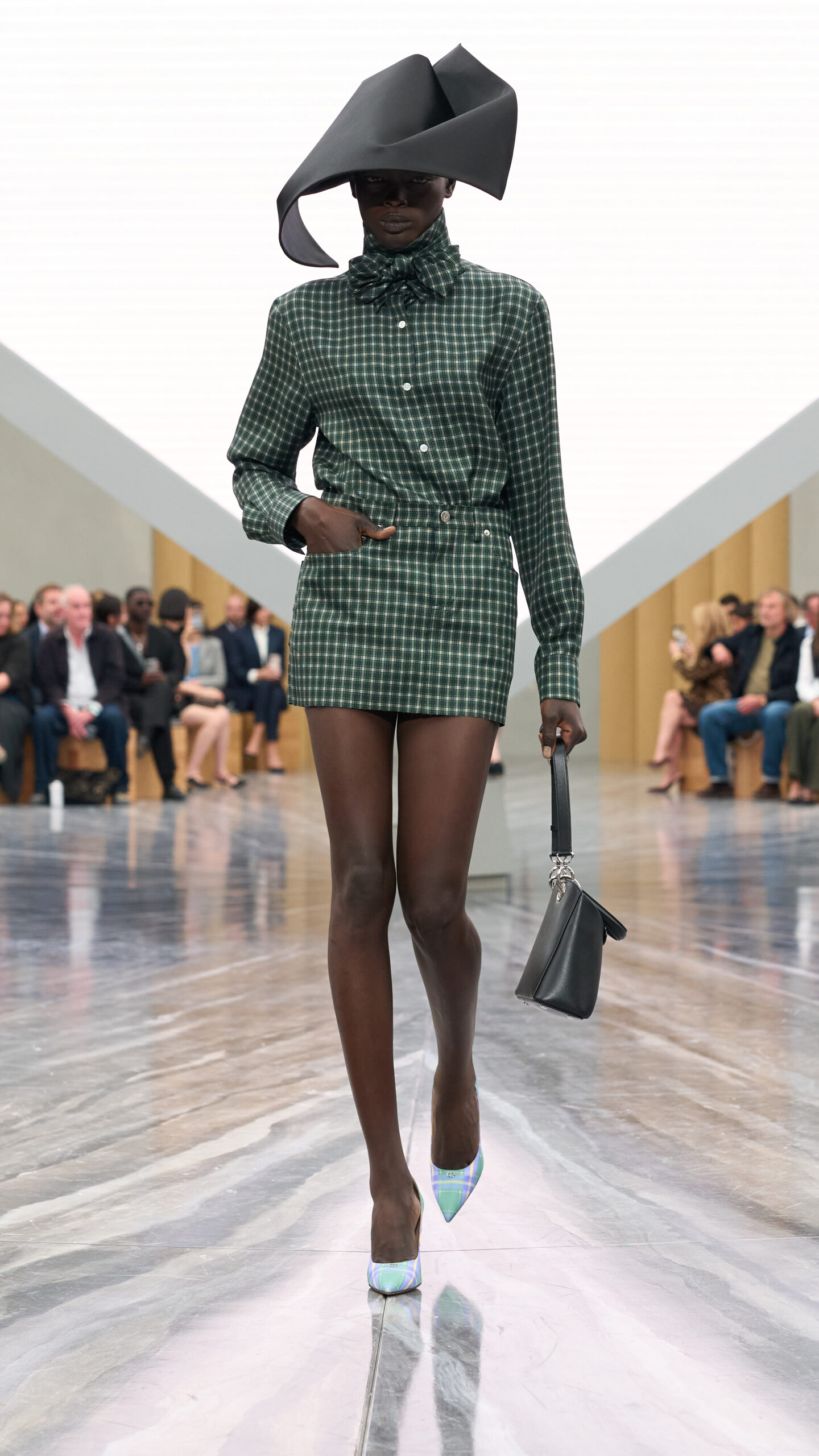
DIOR
From J.W. Anderson to Loewe, this designer’s expression was always genre-bending, so you couldn’t quite put his something-for-everyone approach down to wanting to please a broad audience. Instead, his diverse proposals felt like an astute and kind of confrontational reflection of our own consumption. As he observed: “The world is not operating in this linear line. If you go to social media, you’re seeing everything from horror to beauty to sheep running through fields. Everything is bizarre. We live in a bizarre moment. It’s escapism. I believe it’s because we cannot control what is happening in the bigger part,” he said, referring to the escalatory political climate. If this designer’s Dior era is going to offer social commentary like this, praise be.
So, did Jonathan Anderson “win” this unprecedented season of newness? Thankfully, that question could and should never merit a yes or no answer. His Dior debut was suspended between the studious and the purely seductive, or as he put it: “The tension that lies in Dior itself and where we are today: dressing up and reality.” In a time when some of the few intellectual and avant-garde fashion brands we have are being dumbed down by “simplification” and billion-euro targets, you can only commend a proposal that endeavors to create clothes which are smart in both senses of the word.
